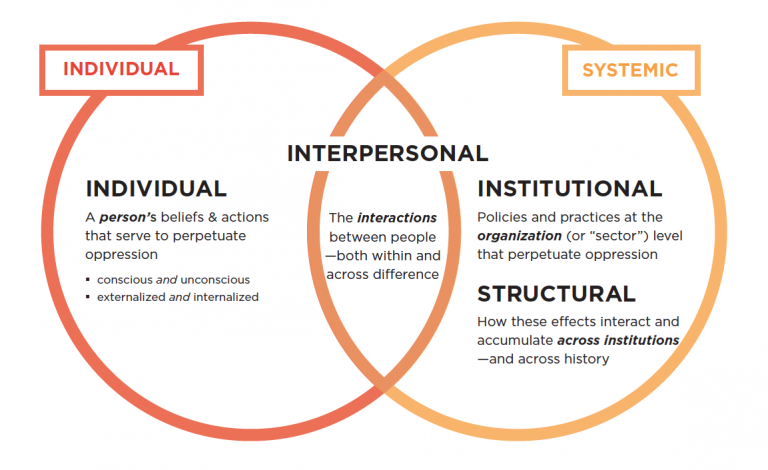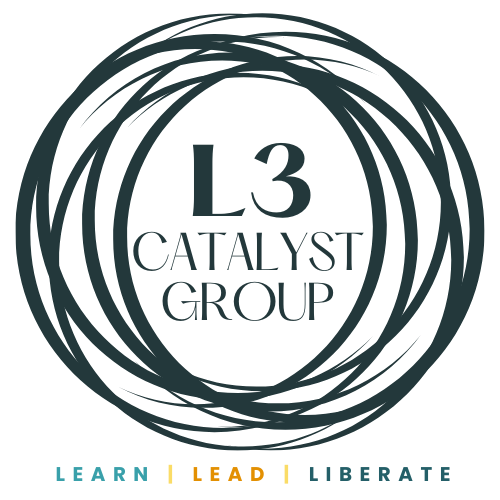
Lens Metaphor Helps Us See Oppression
Last year I wrote a longer post about the Lens of Systemic Oppression by the National Equity Project, but I want to highlight this as a core concept that is mini but not simple.
This framework is a metaphor that illustrates visually the fact that oppression always occurs at these four levels:
 Source: Lens of Systemic Oppression by NEP
Source: Lens of Systemic Oppression by NEP
I see evidence of oppression daily at these four levels: personal, interpersonal, organizational, and systemic.
- When focusing on personal and interpersonal, people want to jump to organizational.
- When focusing on systemic inequity, people want to jump to personal.
- When in a personal space, people quickly point out that systems perpetuate oppression without individual or interpersonal animus.
All of these are true.
All four levels of oppression are required to perpetuate oppression.
Although systems of oppression can be overwhelming, we must adjust our aperture to see them for what they are. And because they were created, they can be changed. When we see more clearly, we can connect with the millions that have gone before us in resistance to oppression. I rest in the fact that I don’t have to reinvent this or come up with new solutions by myself.
I see leaders worldwide changing themselves, their relationships, and their organizations and systems to be more inclusive and anti-oppressive.
This list from National Equity Project frames the following assumptions about the Lens of Systemic Oppression:
- All negative forms of prejudice and/or bias are learned and, therefore, can be unlearned.
- Oppression and injustice are human creations and phenomena and, therefore, can be undone.
- Systemic oppression exists at the level of institutions (harmful policies and practices) and across structures (education, health, transportation, economy, etc.) that are interconnected and reinforcing over time.
- Oppression and systematic mistreatment (such as racism, classism, sexism, or homophobia) are more than just the sum of individual prejudices.
- Systemic oppression is systematic and has historical antecedents; it is the intentional disadvantaging of groups based on their identity while advantaging members of the dominant group (gender, race, class, sexual orientation, language, etc.).
- Systemic oppression manifests in economic, social, political, and cultural systems.
- Systemic oppression and its effects can be undone through recognizing inequitable patterns and intentional action to interrupt inequity and create more democratic processes and systems supported by multi-ethnic, multi-cultural, multi-lingual alliances and partnerships.
- Discussing and addressing oppression and bias will usually be accompanied by strong emotions.
Where do you see these four levels of oppression? Where can you make the most impact for inclusion and equity?


November 16, 2022




Comments